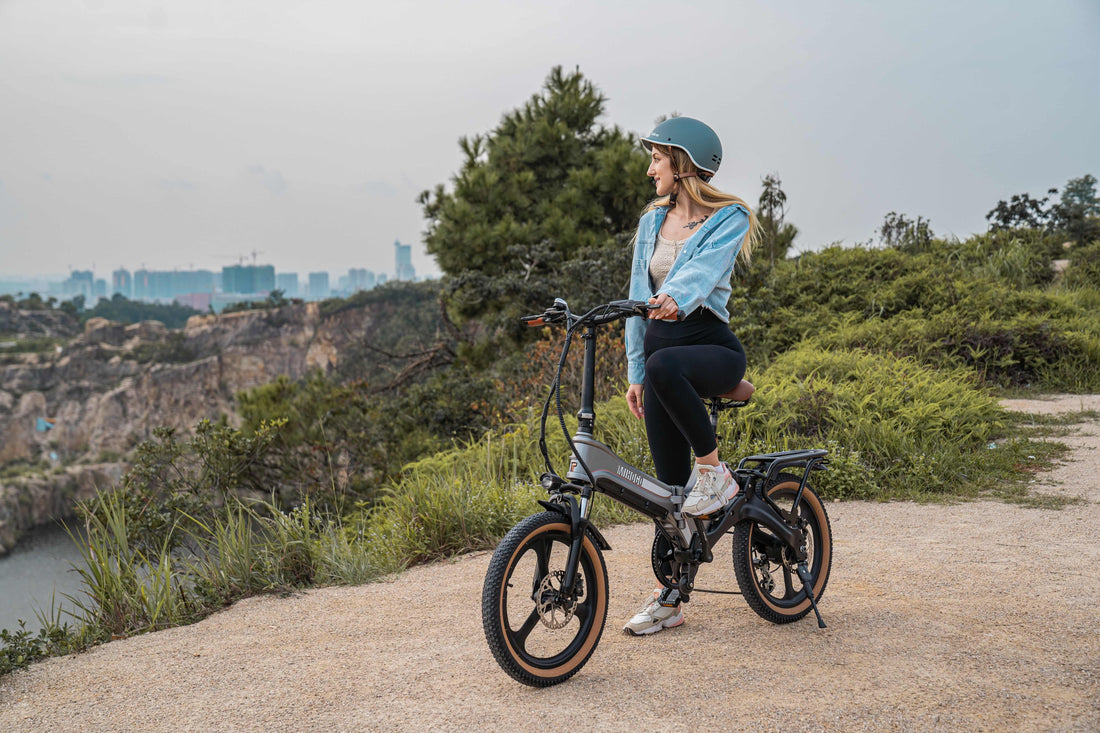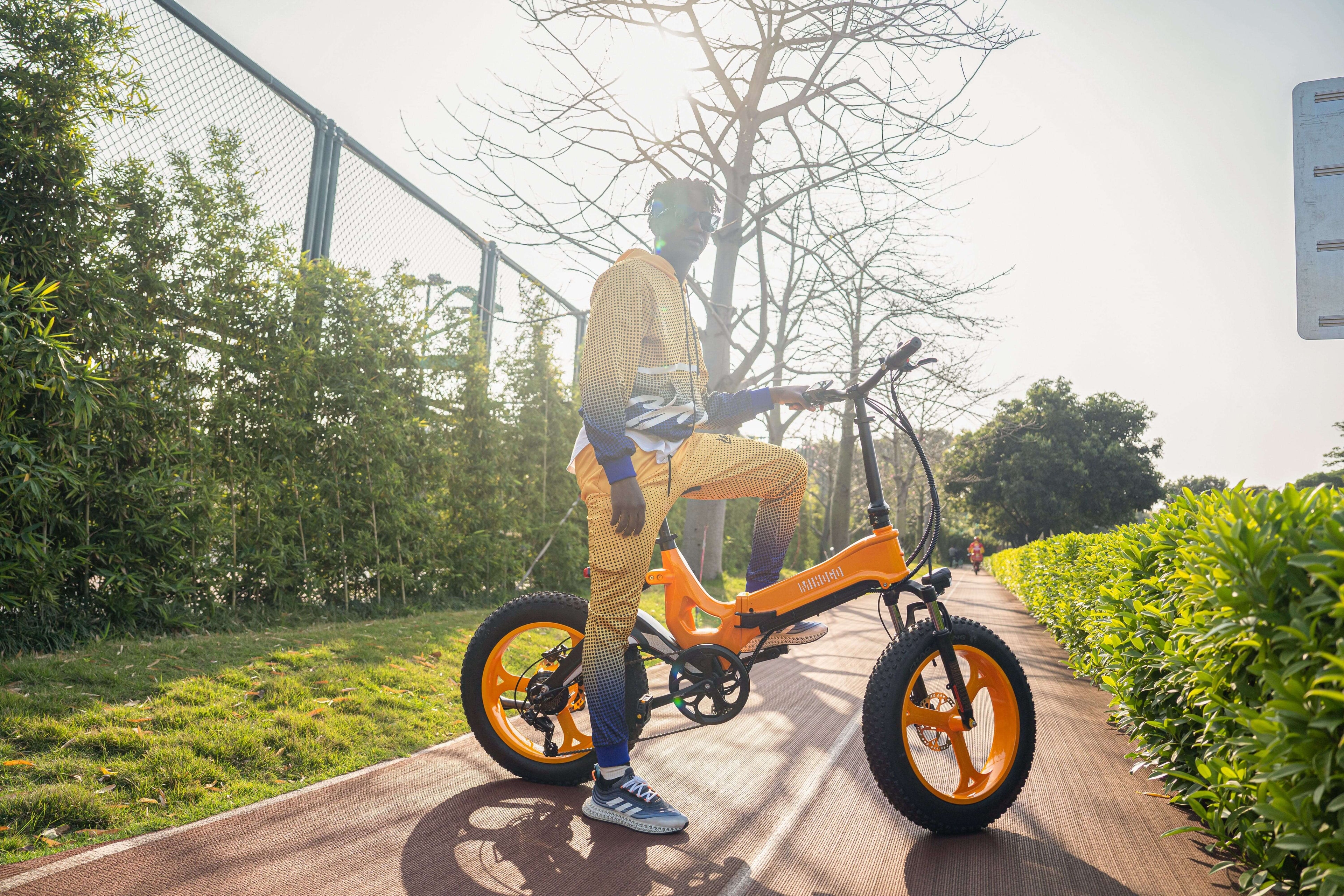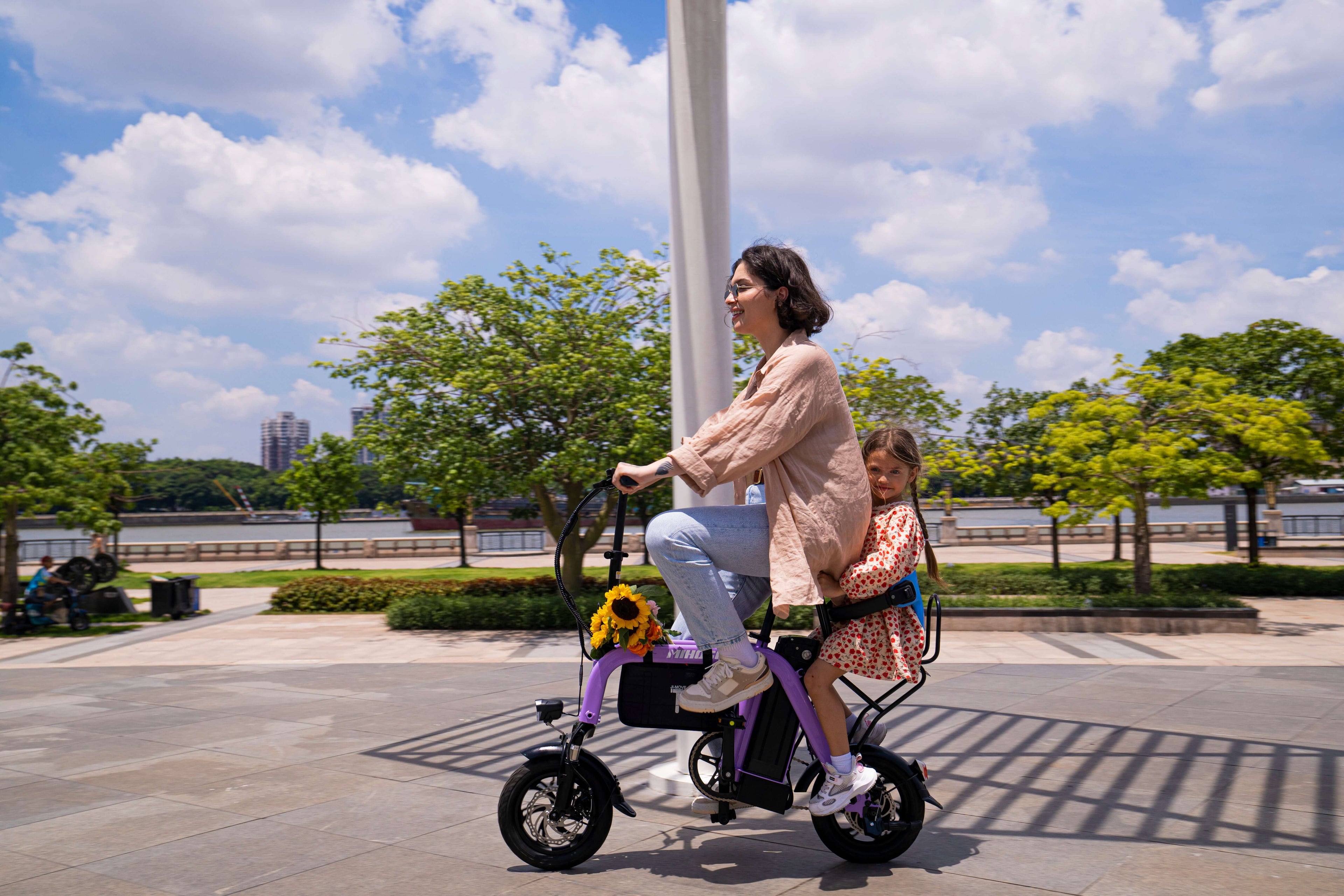Understanding Fog Riding Challenges for E-Bike Riders
Fog creates several unique challenges for cyclists, including severely reduced visibility for both riders and other road users, moisture accumulation on protective gear, and spatial disorientation that can affect navigation and safety. E-bike riders face additional considerations due to their higher speeds compared to traditional bicycles.
The Mihogo ONE Utility EBIKE with its 750W motor and 25MPH top speed requires extra caution in foggy conditions, as the faster speeds mean less reaction time when visibility suddenly drops. Similarly, even the compact Mihogo Mini reaching 21.9MPH needs careful handling when fog reduces your effective sight distance.
Essential Pre-Ride Safety Preparations
Battery and Electrical System Checks
Before venturing into foggy conditions, ensure your Mihogo e-bike's electrical systems are functioning optimally:
- Full Battery Charge: Make sure you have adequate fuel in the tank before starting your journey during foggy conditions. Your Mihogo Air750 Max's 121-mile range or the RX 2.4's 40-mile range should be verified before departure.
- Light System Inspection: Test all front and rear lights, ensuring clean lenses and proper beam alignment
- Display Functionality: Verify your e-bike's display is working correctly for speed monitoring
Essential E-Bike Lighting Equipment
Quality LED ebike headlights typically provide 20,000-50,000 hours of operation before significant brightness degradation, making them one of the most cost-effective safety improvements you can make to your electric bicycle. For fog riding, consider these lighting upgrades:
Front Lighting Requirements:
- Minimum 400-800 lumens for urban riding
- Wide beam pattern for peripheral visibility
- Steady beam (avoid high-beam settings that reflect off fog)
Rear Lighting Essentials:
- Flashing red lights with 360-degree visibility
- Recent California legislation requires e-bikes to be equipped with a red reflector or flashing red light on the rear when ridden in the dark, with reflected light visible from 500 feet when illuminated by car headlights
Personal Protective Equipment
Helmet and Visibility Gear:
- Smart helmets provide significant safety benefits through integrated lighting, crash detection, and communication features
- High-visibility or reflective clothing in bright colors
- Wear jackets with reflective materials to help other motorists spot you
Anti-Fog Solutions:
- Apply anti-fog treatments to helmet visors and glasses
- Carry lens cleaning cloths for moisture removal
Core Fog Riding Techniques for Mihogo E-Bikes
Speed Management Strategies
Speed is the first and foremost thing that needs to be taken care while riding in any situation. During fog, one needs to slow down the speed for better control in case of sudden braking.
Speed Guidelines by Mihogo Model:
- Air750 Max & ONE Utility (750W): Reduce speed to 60-70% of normal pace
- RX 2.4 (500W): Maintain speeds under 15 MPH in dense fog
- Mihogo Mini (350W): Keep speeds conservative, around 10-12 MPH
Positioning and Lane Management
Ride on the left side of the road while maintaining certain distance from it. In case someone tries to overtake, you have sufficient space for yourself. For e-bike riders, proper positioning becomes even more critical:
- Maintain consistent lane position
- Avoid sudden movements or lane changes
- Stay visible to following traffic by using your brake lights periodically
Advanced Visibility Techniques
Dynamic Lighting Strategy:
- Tap your brake lights in regular intervals so motorists behind are alerted about your presence
- Use steady front lights rather than strobe modes in fog
- Consider supplementary lighting such as spoke lights or reflective tire treatments
Sound Awareness:
- Use your e-bike's bell or horn more frequently
- Listen carefully for approaching vehicles
- Reduce audio distractions (headphones, music)
Mihogo-Specific Safety Features and Adaptations
Leveraging Your E-Bike's Technology
Power Management: Your Mihogo e-bike's pedal-assist system can be optimized for fog riding:
- Use lower assistance levels for better control
- Rely more on manual pedaling for enhanced feel of road conditions
- Monitor battery usage as increased lighting and longer travel times consume more power
Braking Systems: All Mihogo models feature reliable braking systems that require special attention in foggy conditions:
- Apply brakes earlier and more gradually
- Apply even pressure to both front and rear brakes, especially during sudden stops to prevent skidding and provide better stability
- Account for increased stopping distances due to moisture on brake surfaces
Model-Specific Considerations
For Carbon Fiber Air750 Max Riders:
- The lightweight carbon frame provides excellent handling in fog
- Use the 750W motor conservatively to maintain control
- Take advantage of the bike's responsive steering for precise maneuvering
For Utility E-Bike Users:
- The ONE Utility's robust build handles fog conditions well
- Utilize cargo capacity for extra safety equipment
- The upright riding position provides better visibility
For Folding RX 2.4 Commuters:
- Compact design allows for easier storage if conditions worsen
- 500W motor provides adequate power while maintaining control
- Ideal for urban fog commuting with quick deployment
For Mini Model Riders:
- Lower speed capability (21.9 MPH) naturally safer in fog
- Lightweight design requires extra attention to wind effects
- Perfect for short-distance fog navigation
Emergency Procedures and Route Planning
When to Stop Riding
In dense fog, the safest choice is often to delay your ride—it's a high-risk condition that can severely compromise your safety. Consider stopping when:
- Visibility drops below 50 feet
- Road conditions become unpredictable
- Your e-bike's range might be compromised
- Other traffic becomes erratic
Safe Stopping Procedures
If you must stop during fog:
- Move completely off the roadway
- Use hazard lights if available
- Park your bike somewhere secure and wait in a safe range far from your motorcycle
- Call for assistance if necessary
Route Planning for Fog Conditions
Pre-Ride Planning:
- Choose familiar routes with good lighting
- Avoid areas with heavy traffic or complex intersections
- Plan for longer travel times
- Identify safe stopping points along your route
Alternative Transportation: Consider postponing your ride or using alternative transportation when fog conditions are severe. Your safety is more important than maintaining your schedule.
Technology and Equipment Upgrades
Smart Lighting Systems
Modern ebike turn signals incorporate wireless remote controls, LED technology, USB charging capabilities, and waterproof designs that work seamlessly in all weather conditions. Consider upgrading to:
- Automatic brightness adjustment systems
- Integrated turn signals for clear communication
- Smart lights that activate based on ambient conditions
Mirror and Visibility Enhancements
Quality mirrors represent one of the most cost-effective safety investments any cyclist can make, providing continuous awareness without compromising forward focus or balance. Essential for fog riding:
- Wide-angle mirrors for better peripheral vision
- Anti-fog mirror treatments
- Multiple mirror configurations for complete coverage
Emergency Communication
Modern e-bike safety includes staying connected:
- GPS tracking for route sharing
- Emergency contact systems
- Mobile phone mounts with weather protection
Legal and Insurance Considerations
It is always recommended to wear a safety helmet and use front and rear lights, especially when riding at night or in low-visibility conditions. Ensure compliance with local regulations:
- Helmet requirements vary by state and age
- Lighting requirements for low-visibility conditions
- Most states do not require a license, registration, or insurance for ebikes that meet the three-class definitions
Maintenance After Fog Riding
Post-Ride Care for Your Mihogo E-Bike
Fog exposure requires specific maintenance attention:
- Dry all electrical connections
- Clean and lubricate the chain
- Check brake function after moisture exposure
- Inspect lighting systems for moisture ingress
- Charge battery in a dry environment
Long-term Care
Regular maintenance ensures your Mihogo e-bike remains reliable in challenging conditions:
- Apply protective coatings to metal components
- Regularly service electrical systems
- Maintain proper tire pressure for optimal grip
- Keep emergency repair kits updated
Conclusion: Confident Fog Riding with Mihogo
Mastering fog riding techniques transforms challenging conditions into manageable situations. Whether you're commuting on your Mihogo RX 2.4 or exploring with your Air750 Max, these safety strategies ensure you arrive at your destination safely.
Remember that bicycle safety is the use of road traffic safety practices to reduce risk associated with cycling, and fog conditions amplify the importance of every safety measure. Your Mihogo e-bike's advanced features, combined with proper technique and equipment, provide the foundation for safe low-visibility riding.
Key Takeaways:
- Prepare thoroughly with proper lighting and protective gear
- Adjust speed and riding style for conditions
- Use your Mihogo's technology advantages wisely
- Know when conditions are too dangerous to continue
- Maintain your e-bike properly after fog exposure
Stay safe, stay visible, and enjoy the confidence that comes with proper preparation and technique. Your Mihogo e-bike is built to handle challenging conditions—now you have the knowledge to handle them too.
Related Resources:
- Bicycle Safety - Comprehensive safety information
- CDC Bicycle Safety Guidelines - Official safety recommendations
- NHTSA Bicycle Safety - Federal safety standards
For more information about Mihogo e-bikes and safety accessories, visit our complete e-bike collection.








